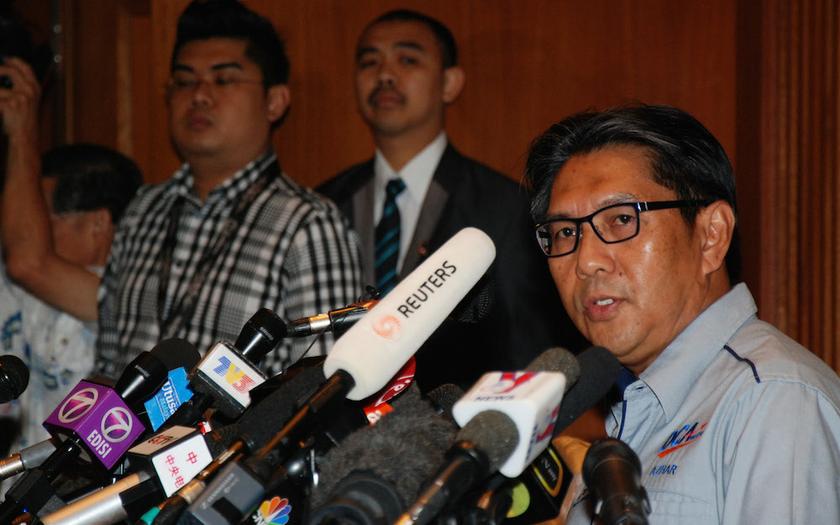KUALA LUMPUR, March 11 ― An emergency in a cockpit could occupy the full attention of the airplane’s entire crew that may prevent its pilot from radioing any ground support for immediate help, an Airbus A330 captain said .
An aviator’s priorities are to maintain control of the airplane above everything else, pilot Bill Palmer ― who also authored Understanding Air France 447 ― wrote on CNN’s website today, as authorities remain stumped over the disappearance of a Malaysia Airlines (MAS) jet in mid-flight, three days after the incident.
Drawing parallels between the disappearance of MH370 and the Air France 447, an Airbus A330 that crashed in an area beyond radar coverage in the ocean north of Brazil in June 2009, Palmer said the lack of a radio or distress signal was not surprising.
Like the Air France plane, Palmer pointed out that the Malaysia Airlines aircraft was a state-of-the-art, fly-by-wire airplane, a Boeing 777, with an excellent safety record.
Both did not get a chance to send a distress call, he noted.
“The recovery of the Malaysian aircraft's flight data and cockpit voice recorders would be important in determining the cause of the accident.
“Flight data recorders contain data from more than 1,000 aircraft parameters, including altitude, vertical speed, airspeed, heading, control positions and parameters of the engines and most of the aircraft's onboard systems, captured several times per second.
“The cockpit voice recorder archives the last hours of not just cockpit voices and sounds but also all radio and onboard inter-airplane communications,” he wrote.
It has been four days since the Malaysia Airlines Boeing 777-200 aircraft fell off the radar at 1.30am, carrying 239 crew members and passengers from more than 10 countries.
Search involving 10 countries intensified with 34 aircraft and 40 ships scouring 100 nautical miles from the Igari checkpoint and near Penang on the Straits of Malacca.
Palmer said once the wreckage is located, an examination of the debris and its distribution will tell investigators if the airplane was intact upon impact and the angle at which it hit.
“Metallurgical and chemical analysis of the parts will determine the stresses and angles that caused the parts to fail, and if explosives were present.
“These findings of fact will drive the creation of theories by investigators about what caused the loss of the airplane and its passengers,” Palmer said.
He also pointed out that MH370’s route heading north from Kuala Lumpur was over sparsely populated and heavily forested mountainous areas of Malaysia and the Gulf of Thailand.
Reports of a possible course reversal observed on radar could be the result of intentional crew actions but not necessarily, he said.
“During Air France 447's 3½-minute descent to the Atlantic Ocean, it too changed its heading by more than 180 degrees, but it was an unintentional side effect as the crew struggled to gain control of the airplane,” Palmer said.
In the case of the Air France plane, he pointed out that it took five days of intensive searching before the first floating wreckage was found, and nearly two years to locate the remains of the aircraft on the ocean floor 12,000 feet below, broken into thousands of pieces by the impact with the water.
Location of the wreckage may be aided by underwater locator beacons on the airplane's flight recorders, if they have not been damaged in the impact like those on the French plane were, Palmer added.
He also said that the recovery for MH370, if it is in the water, would be easier than the long and expensive effort to recover parts of the Air France plane from the 4 kilometre-deep ocean, where most of the airplane and many of its victims remain.
The wreckage of the Air France flight was located in April 2011, with the flight recorders recovered and analysed that May.
According to media reports, the crew had failed to react swiftly and effectively to technical problems, resulting in a stall, which over almost four minutes, sent 228 passengers and crew plunging into the Atlantic ocean.
“The investigation of Malaysia Airlines Flight 370 will be sure to take many months, if not years.
“We will know the truth of what happened when the aircraft is found and the recorders and wreckage are analysed.
“In the meantime, speculation is often inaccurate and unproductive,” he said.
The search and rescue operations for MH370 is led by the Department of Civil Aviation director-general Datuk Azharuddin Abdul Rahman.



















